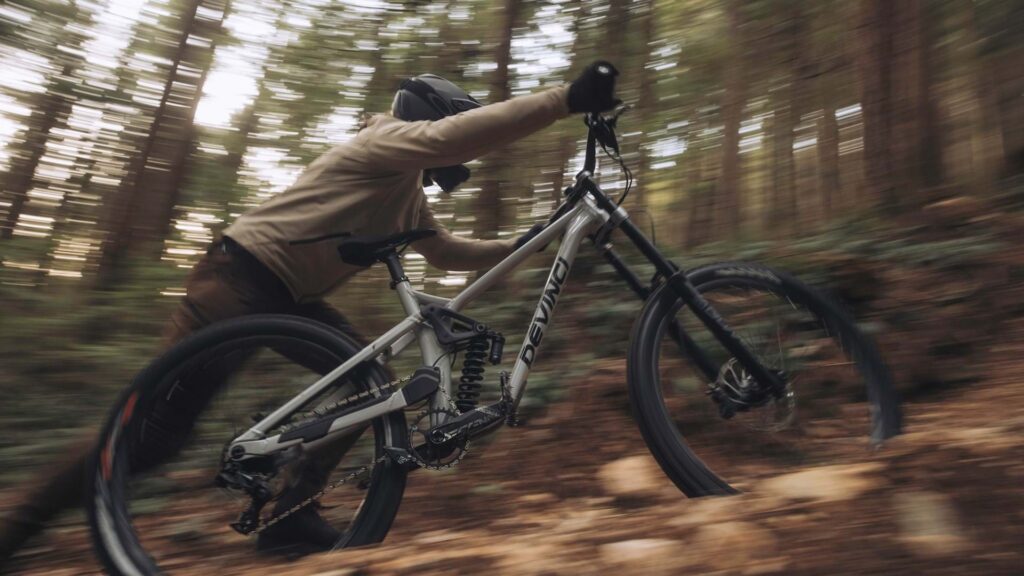Rad Power Bikes helped shape the modern direct-to-consumer e-bike category in North America by focusing on something many early brands ignored: everyday usefulness. Instead of chasing ultralight frames or high-end spec sheets, Rad centered its bikes around hauling capacity, stability, comfort, and price points that make e-bike ownership feel achievable. For riders looking to replace short car trips, carry kids, or simply make day-to-day transportation easier, Rad remains one of the most recognizable names in the game.
This 2026 overview looks at the brand’s design approach, core lineup, ride behavior, ownership considerations, strengths and tradeoffs, and how Rad compares to competitors like Aventon, Lectric, and Ride1Up.
Brand Snapshot
Rad’s philosophy is straightforward: build e-bikes that solve real transportation problems. That means upright geometry, frames that welcome accessories, wide tires for stability, and motors tuned for hill starts and stop-and-go riding. Nearly every model prioritizes cargo potential and low-stress handling over sporty performance.
| Category | Details |
|---|---|
| Core Idea | Useful, approachable e-bikes for everyday life |
| Design Focus | Stability, durability, wide fit range, high accessory compatibility |
| Typical Price Range | ~$1,200–$2,000 depending on sales/promos |
| Ideal Riders | Commuters, parents, delivery workers, utility-focused riders |
The brand resonates most with people who want an e-bike that “just works”—something reliable enough to ride daily and adaptable enough to haul whatever the day requires.
Where Rad Stands Out
Utility-Driven Design
Long rear racks, integrated mounting points, and stout frames turn Rad bikes into load carriers. Many owners treat them as a second car—and in dense cities, often a first.
Upright, Confident Fit
The geometry encourages heads-up riding and makes it easy for newer riders to get comfortable quickly. Step-through frames dominate the lineup for a reason.
A Deep Accessory Ecosystem
Child seats, front and rear baskets, panniers, delivery boxes, platforms, lights—Rad’s accessory suite is one of its biggest strengths. Most items bolt on cleanly without custom solutions.
Approachable Pricing
By staying in the value-performance zone, Rad reaches a wide audience and competes aggressively with Aventon and Lectric.
Stable, Predictable Ride Feel
Wide tires, long wheelbases, and calm steering make loaded rides feel manageable, even for beginners.
The Rad Lineup (2026)
Rad’s model names evolve, but their categories stay consistent. Thinking in terms of use case makes choosing much easier.
1) Longtail Cargo — Family & Hauling Workhorse
Use it for: School runs, groceries, two kids on the back
Where it shines: Long wheelbases add calm handling; racks are built for heavy loads
Ideal riders: Families replacing short car trips, year-round commuters with cargo needs
2) Utility / Compact-Cargo — Modular Everyday Bike
Use it for: One kid + panniers, deliveries, versatile errand duty
Where it shines: Good load capacity with easier storage than a full longtail
Ideal riders: Apartment dwellers, gig couriers, riders who need one bike to do everything
3) City / Commuter — Comfortable, Upright Transport
Use it for: Daily commuting, fitness rides, paved trails
Where it shines: Integrated lights, fenders, and low-stress power delivery
Ideal riders: New riders, office commuters, anyone wanting predictable all-weather transport
4) Fat-Tire / All-Terrain — Confidence on Rough Surfaces
Use it for: Gravel connectors, poor pavement, sand/snow routes
Where it shines: Wide tires provide traction and natural damping
Ideal riders: Weekend explorers, riders on rough roads, taller/heavier riders who prefer a planted bike
5) Folding / Space-Saving — Travel & Compact Storage
Use it for: RVs, boats, small apartments, trunk transport
Where it shines: Collapsible frames that still support racks and bags
Ideal riders: Travelers, multi-modal commuters, minimalists
Ride Impressions & Behavior
Power Delivery
Rad tunes its motors for steady, confidence-building support rather than sporty acceleration. Hill starts feel controlled, especially with throttle assist, which is helpful when carrying cargo or riding through traffic.
Handling & Comfort
Upright positioning, wider tires, and longer wheelbases give Rad bikes a stable and forgiving character. This makes them excellent for riders who want predictability more than quickness.
Braking
Specs vary by model and year, but the goal remains the same: dependable, low-maintenance braking suited for heavier bikes and cargo loads.
Noise & Overall Feel
Hub motors are generally quiet and produce a “solid and uncomplicated” ride feel—more moped-like under load than nimble.
Fit & Sizing
Step-through designs and adjustable cockpits accommodate a wide height range. Test for reach and standover when possible, especially for the taller end of the spectrum.
Real-World Use Cases
Family Transport
Longtails with two seats and panniers transform school drop-offs and grocery trips into predictable routines.
Car-Light Living
A commuter Rad with racks and fenders handles errands without the overhead of a car.
Delivery & Side Hustles
Utility models excel in stop-and-go environments thanks to strong load capacity and stable handling.
Recreation & Exploration
Fat-tire models smooth out rough surfaces and help riders feel comfortable on mixed routes.
Ownership: Charging, Upkeep & Security
Charging & Range
Expect practical ranges that depend heavily on load, terrain, temperature, and riding style. Treat the battery like a long-term appliance: avoid full discharges, store it properly, and charge consistently.
Maintenance Cadence
Rad ownership sits somewhere between a traditional bicycle and a light moped:
- Tires, chains, and brake pads wear faster due to weight and speed
- Plan on quarterly checks for regular riders
- Cargo setups may need more frequent tune-ups
Parts & Availability
Rad’s scale means good access to replacement parts and a relatively large ecosystem of compatible accessories. Wear items remain standard bike components.
Security
Heavier e-bikes invite attention—pair a solid U-lock with a heavy chain, lock wheels if possible, and treat battery security seriously.
Pros & Cons
Strengths
- Strong value for utility-focused e-bikes
- One of the best accessory ecosystems at this price
- Upright, beginner-friendly geometry
- Thriving community and big knowledge base
- Throttle assist improves starts and loaded riding
Tradeoffs
- Heavier than sport-oriented competitors
- Stable handling can feel moped-like when fully loaded
- Specs vary by model year; expect value-tier components
- Not as refined as premium European cargo brands
Rad vs. The Competition
| Category | Rad Power Bikes | Aventon | Lectric | Ride1Up |
|---|---|---|---|---|
| Core Strength | Utility & cargo value | Sleek, integrated city designs | Budget folding/compact options | Fast, efficient commuters |
| Typical Price Range | ~$1,200–$2,000 | ~$1,200–$2,000 | ~$999–$1,500 | ~$1,300–$2,200 |
| Fit/Geometry | Upright, step-through heavy | Urban, stylish | Compact, folding | Sportier commuter stance |
| Accessories | Extensive cargo ecosystem | Good but less cargo-focused | Basic, functional | Third-party friendly |
| Best For | Families, errands, car-replacement | Style-focused commuters | Budget shoppers, travel | Riders who want speed & efficiency |
Interpretation: If hauling and practicality lead your decision-making, Rad remains one of the most compelling choices in its price bracket.
Who Rad Is (and Isn’t) For
Choose Rad if you:
- Want to replace or reduce car trips
- Need reliable cargo capacity for kids, groceries, or gear
- Prefer upright comfort and stable handling
- Value a deep accessory ecosystem
- Want predictable ownership costs
Look elsewhere if you:
- Want the lightest or most agile bike
- Prioritize top-tier components or high-end refinement
- Need a premium European cargo platform
- Prefer sporty riding characteristics over comfort and utility
Buying Tips
- Choose by use case first—cargo vs. utility vs. commuter vs. fat-tire vs. folding
- Budget for accessories; most owners add racks, bags, or lights
- Plan storage & security, especially for longtails
- Test loaded handling if you’ll carry kids or cargo
- Maintain tire pressure and brake pads; both matter more on heavier bikes
Final Thoughts on Rad Power
Rad Power Bikes focuses on practicality over prestige, and that’s exactly why the brand has such staying power. These bikes aren’t built to win style contests or speed tests. They’re built to make day-to-day life easier—whether that means school runs, grocery hauls, errands, or recreational rides with family. For riders who want a dependable tool that can shoulder real loads without draining the bank account, Rad remains one of the most solid choices in the DTC e-bike world.
Related Content:
- Ride1Up E-Bikes Review
- Mokwheel E-Bikes Review
- Aventon E-Bikes Review
- Best Commuter Bikes Guide
- Best Affordable E-Bikes Brands Guide
Why Trust This Review?
BestBikeBrands is built by lifelong cyclists with decades of real-world experience — in the shop, on the trail, and behind the wrench. Our goal is simple: to help riders choose the best bikes and gear with confidence, backed by expert insights and hands-on testing. Learn more about us →






